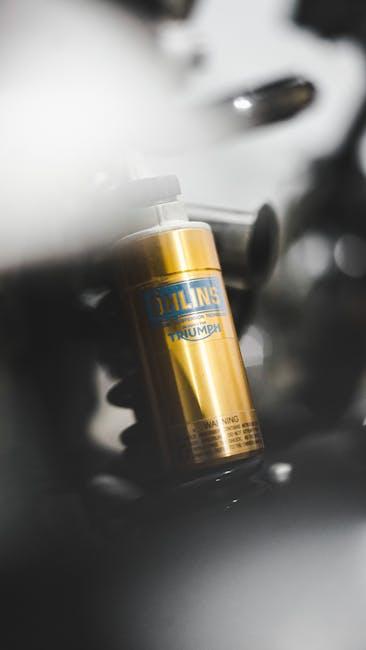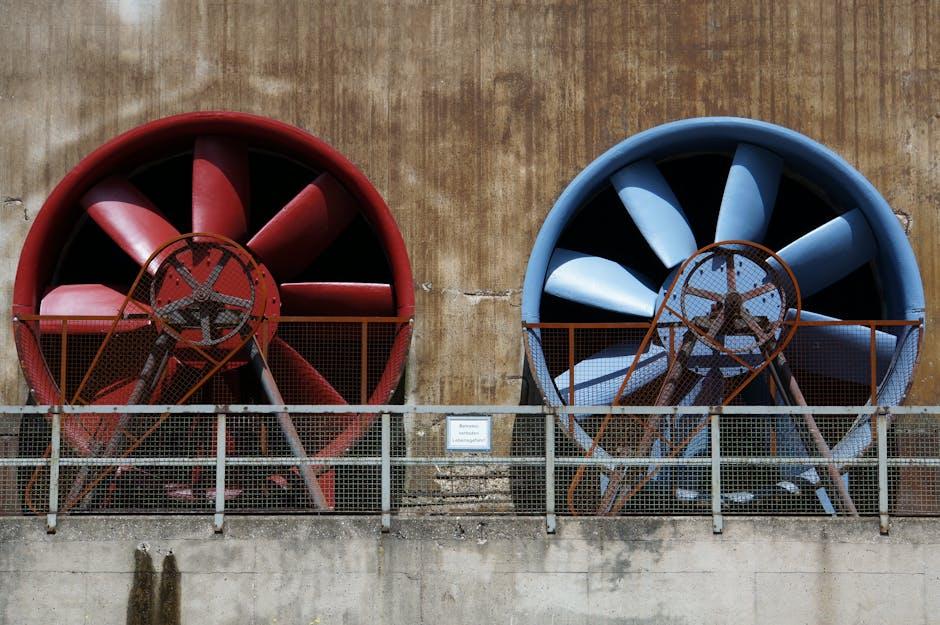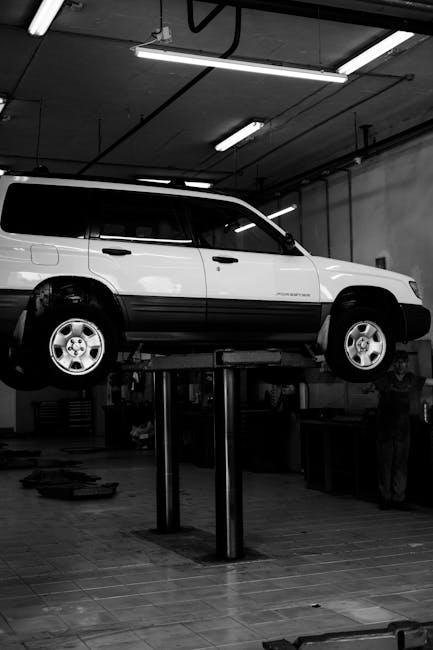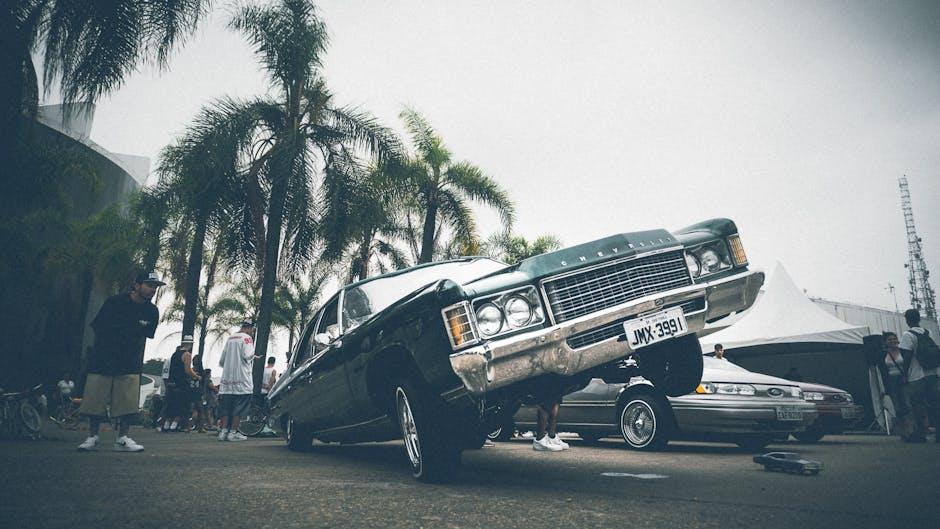Every journey on the road offers a rhythm—a hum of tires on asphalt, the whirr of the engine, and the subtle whispers of your vehicle’s suspension working beneath you. But when that rhythm is interrupted by unexpected noises—clunks, creaks, or squeaks—it’s a signal worth paying attention to. Suspension noises are more than just minor annoyances; they can be the vehicle’s way of communicating issues that, if left unchecked, may compromise safety and comfort. In this article, we’ll explore the common sounds that arise from your suspension system, unravel what causes them, and help you understand when it’s time to listen closely—and perhaps take action.
Table of Contents
- Understanding the Origins of Suspension Creaks and Groans
- Identifying the Causes of Clunking and Banging Noises
- How Worn Bushings Affect Suspension Sound and Performance
- The Role of Shock Absorbers in Suspension Noise Diagnosis
- Preventive Maintenance Tips to Reduce Suspension Noise
- When to Seek Professional Inspection for Persistent Suspension Sounds
- Q&A
- To Wrap It Up

Understanding the Origins of Suspension Creaks and Groans
When your vehicle’s suspension begins to emit creaks and groans, it’s often a subtle cry for attention from worn or stressed components. These noises usually originate from friction occurring between moving parts lacking sufficient lubrication, or from materials that have begun to degrade due to age and environmental exposure. Key culprits include bushings, ball joints, and control arms, which rely on smooth, glide-like motion to function quietly. As rubber degrades or metal parts slip slightly, the suspension system starts producing those unmistakable warning sounds that signal the need for inspection.
Understanding what specific noises point to can simplify diagnosing suspension issues. For instance, creaking often correlates with dry or cracked bushings, while groaning may stem from excessive pressure on joints or mounting points. Below is a quick reference table highlighting common suspension parts and their typical sounds:
| Suspension Part | Common Noise | Probable Cause |
|---|---|---|
| Bushings | Creaking | Dryness, cracks, or wear |
| Ball Joints | Groaning | Excessive load or lack of lubrication |
| Control Arms | Clicking or popping | Worn bushings or damaged mounts |
| Shock Absorbers | Knocking | Leaking fluid or broken mounts |

Identifying the Causes of Clunking and Banging Noises
When your vehicle emits clunking or banging sounds, pinpointing the root cause is essential for timely repairs and safety. These noises often originate from worn or damaged suspension components that fail to absorb the road’s impact smoothly. Common culprits include loose control arm bushings, broken sway bar links, and faulty ball joints. Each part plays a vital role in maintaining proper alignment and cushioning, so any compromise can translate into those unsettling bangs while driving over bumps or potholes.
To help identify the specific cause, refer to the guide below outlining typical noises and their likely sources:
| Noise Description | Possible Causes | Visual/Physical Signs |
|---|---|---|
| Sharp clunks on uneven roads | Loose control arm bushings | Excessive play in wheel, cracked rubber parts |
| Banging when turning | Worn ball joints | Uneven tire wear, steering looseness |
| Sporadic thuds over bumps | Broken sway bar links | Rattling noise inside wheel wells |

How Worn Bushings Affect Suspension Sound and Performance
When bushings begin to wear out, their ability to cushion and isolate vibrations diminishes significantly. As the soft material inside these components degrades, your suspension no longer absorbs shocks smoothly, resulting in an array of unsettling noises. Commonly, you might notice a persistent clunking or creaking sound whenever your vehicle hits bumps or takes corners. These noises are often the suspension articulating metal-on-metal due to the loss of the bushing’s dampening properties.
Beyond the auditory clues, worn bushings can subtly alter your vehicle’s handling and ride quality. Expect increased play in the steering, less precise control during turns, and a generally harsher ride as metal components lose their buffer. This degradation can lead to faster wear on tires and other suspension parts, compounding maintenance issues over time.
- Noise types: clunks, squeaks, creaks
- Ride impact: rough, less stable
- Handling effects: loosened steering response
- Further damage risk: uneven tire wear
| Symptom | Cause | Impact |
|---|---|---|
| Clunking Sounds | Worn bushing material | Metal contact & noise |
| Creaking | Dry or cracked bushings | Noise on suspension movement |
| Loose Handling | Excessive bushing play | Imprecise steering |
| Uneven Tire Wear | Misaligned suspension | Shorter tire lifespan |

The Role of Shock Absorbers in Suspension Noise Diagnosis
The shock absorbers play an indispensable role in maintaining the harmony of your vehicle’s suspension system, acting as the primary dampers that control the oscillations of the springs. When diagnosing suspension noise, understanding how these components function can lead to quicker, more accurate troubleshooting. Worn or damaged shock absorbers often produce a distinctive clunking or knocking sound as they fail to cushion impacts effectively, causing metal-to-metal contact or excessive movement within the suspension assembly. By isolating noises linked to these parts, mechanics can differentiate between simple wear and more severe suspension faults.
Several signs hint at shock absorber-related issues, such as:
- Uneven tire wear due to poor damping performance
- Excessive bouncing after hitting a bump
- Leaking hydraulic fluid around the shock absorber body
Below is a quick reference chart summarizing common shock absorber symptoms and potential noise causes:
| Symptom | Noise Type | Possible Cause |
|---|---|---|
| Bouncing after bumps | Thudding or knocking | Worn shock absorber seals or mounts |
| Squishy feeling during braking | Popping or clunking | Damaged internal shock components |
| Oil stains on suspension parts | Hissing or dripping sounds | Fluid leakage from shock absorber |

Preventive Maintenance Tips to Reduce Suspension Noise
Maintaining a quiet and smooth suspension system requires a proactive approach beyond just addressing noises when they appear. Regular inspections and timely servicing can significantly extend the life of your vehicle’s suspension components. Simple habits such as keeping your tires properly inflated and aligned help reduce uneven wear, which is often a hidden culprit of suspension noise. Additionally, using quality lubricants on moving parts can minimize friction and prevent the annoying creaks and knocks that develop over time.
To keep everything running seamlessly, incorporate the following into your routine maintenance checklist:
- Visual suspension checks: Look for cracked bushings, worn ball joints, and leaks in shock absorbers.
- Routine lubrication: Apply grease to control arms, tie rods, and other pivot points.
- Periodic wheel alignment: Prevent uneven stress and noise from misaligned wheels.
- Tire maintenance: Rotate tires regularly to avoid imbalanced wear affecting suspension balance.
| Maintenance Task | Frequency |
|---|---|
| Tire Pressure Check | Monthly |
| Suspension Visual Inspection | Every 6 months |
| Wheel Alignment | Annually or after impact |
| Lubrication of Joints | Every 12,000 miles |

When to Seek Professional Inspection for Persistent Suspension Sounds
When suspension noises linger despite your best efforts to identify and address them, it’s a clear indicator that a professional evaluation is overdue. Persistent sounds such as clunks, squeaks, or rattles often suggest underlying issues that can escalate into more severe problems if not diagnosed by an expert. Pay close attention if noises intensify during specific maneuvers like turning, braking, or driving over uneven surfaces, as this behavior can pinpoint worn components or alignment troubles needing immediate attention.
Consider scheduling a professional inspection if you notice any of the following signs:
- Unusual vibrations or pulling sensations experienced during everyday driving
- Suspension noise accompanied by uneven tire wear
- Visible fluid leaks around shocks or struts
- Delayed vehicle response or instability on rough terrain
| Symptom | Possible Cause | Urgency |
|---|---|---|
| Squeaking over bumps | Worn bushings | Medium |
| Clunking when turning | Damaged ball joints | High |
| Rattling at high speeds | Loose components | Medium |
| Grinding sounds | Broken struts or shocks | High |
Ignoring these signs often leads to compromised ride comfort and, more importantly, safety hazards. Only a trained technician equipped with the right tools can conduct a thorough inspection, diagnose the exact cause, and recommend necessary repairs or replacements. Proactively addressing persistent suspension noises not only prevents costly repairs down the line but also guarantees a smoother, safer driving experience.
Q&A
Q&A: Common Suspension Noises and Their Causes
Q1: Why does my car make a clunking sound when I go over bumps?
A: A clunking noise often signals worn or damaged suspension components such as ball joints, control arm bushings, or sway bar links. When these parts lose their tight fit or cushioning ability, they can knock against each other or the vehicle frame, creating that unmistakable clunk.
Q2: What causes a squeaking sound while turning or driving over uneven roads?
A: Squeaking is typically caused by dry or worn bushings, especially rubber components that have lost lubrication or flexibility. Struts and shocks with failing mounts or dust boots may also contribute. This noise is a reminder your suspension parts may need cleaning, lubrication, or replacement.
Q3: Why do I hear a knocking noise at low speeds but it disappears at higher speeds?
A: Knocking at low speeds could be due to loose suspension bolts, worn shocks, or broken springs. At higher speeds, the motion changes, sometimes preventing the loose parts from striking each other. It’s best to inspect and tighten loose components promptly.
Q4: What might cause a metallic rattling noise from my suspension?
A: Metallic rattles usually mean metal-on-metal contact. It could be caused by a broken or missing bump stop, loose sway bar links, or damaged strut mounts. These noises are not just annoying—they can indicate stress on suspension parts leading to further damage.
Q5: Is a creaking noise always a sign of suspension trouble?
A: While occasional creaking can happen due to temperature changes or dust, persistent creaking often signals issues such as dried-out or cracked bushings, failing shock mounts, or worn springs. Ignoring these sounds might degrade ride quality and safety over time.
Q6: How can I distinguish suspension noises from other vehicle sounds?
A: Suspension noises typically occur during specific actions—like going over bumps, turning, or changing speeds—and often originate from the wheel area. Other noises may be engine-related or from the drivetrain. If the sound coincides with movement over uneven surfaces or steering, it’s likely suspension-related.
Q7: What should I do if I notice unusual suspension noises?
A: It’s best to get a professional inspection as soon as possible. Early diagnosis can save you from expensive repairs and ensure your vehicle remains safe and comfortable. Suspensions are complex systems, and timely maintenance extends their lifespan.
To Wrap It Up
Understanding the symphony of sounds your suspension system produces can turn confusion into clarity. Each creak, clunk, or squeak tells a story—whether it’s a subtle whisper of wear or a loud call for attention. By tuning into these noises and knowing their causes, you equip yourself with the knowledge to protect your vehicle’s performance and safety. So next time your car speaks through its suspension, listen closely—you might just catch the message before it’s too loud to ignore.

